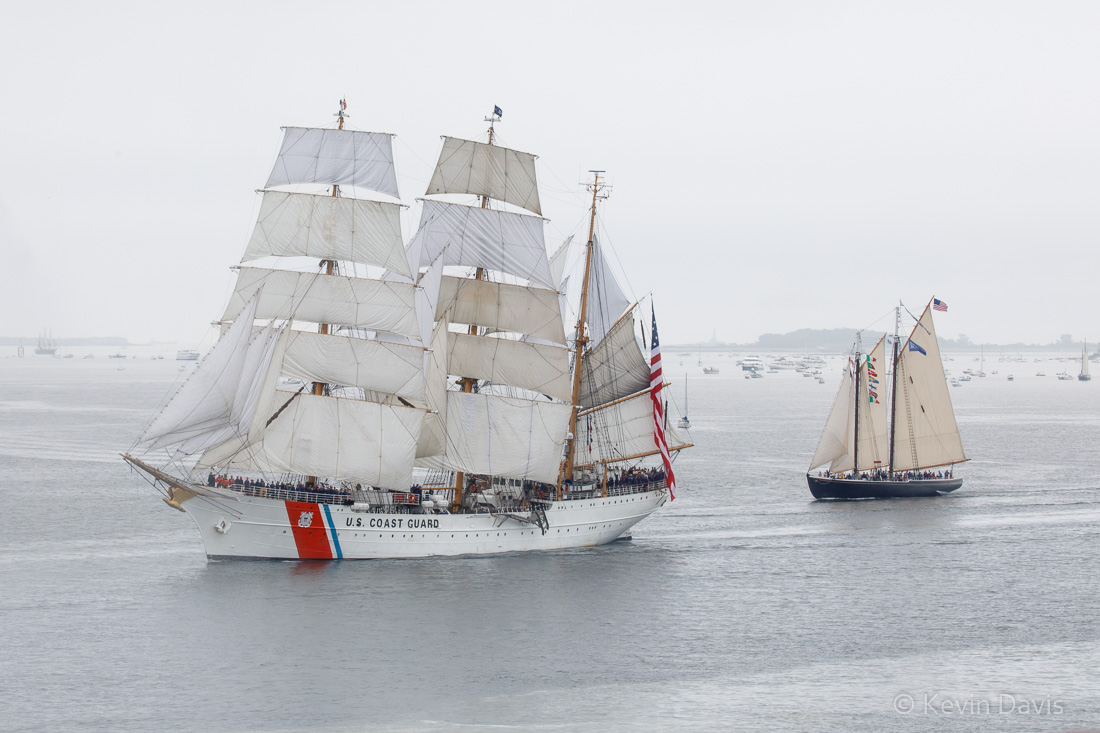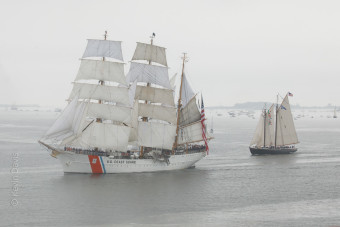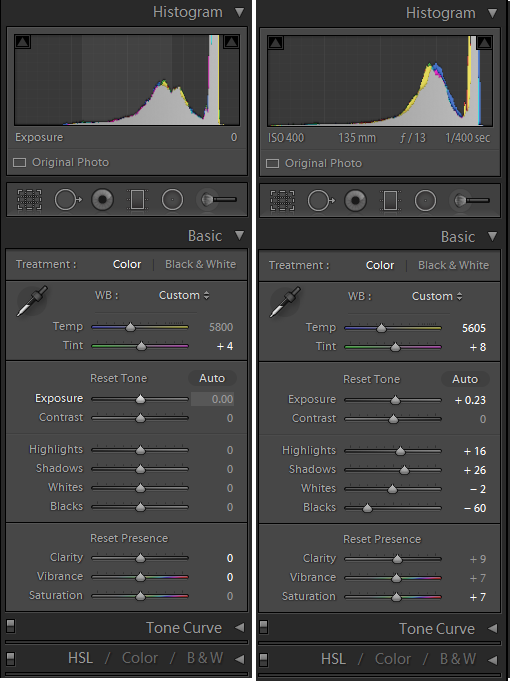
I first began photographing tall ships during SailBoston 2000. Since then, I have photographed tall ships many times from Philadelphia PA to Camden ME. SailBoston 2017 was not to be missed, being the largest gathering of tall ships in the northeast since 1976.
As the weather for the grand parade of sail was a big foggy, the resulting images were low contrast. If your camera is capturing JPEG images, then you might change the camera settings to increase the contrast. But for those of us who are sticklers for image quality and therefore capture RAW images, the camera setting for contrast doesn’t actually do anything. Here’s how I post-processed RAW images using Adobe Lightroom.

(click on the image to see the full-resolution image.)
When lighting is low contrast, you have a choice of keeping that or compensating for it. If you choose to compensate, the most important step is usually to lower the black point. Essentially, low contrast implies that the darkest parts of the image render as a lighter tone and the brightest parts of the image render as less bright. Dark isn’t particularly dark and bright isn’t particularly bright.
With the original settings shown on the left, notice that the histogram at the top shows none of the image information extends to the far left. None of the image falls into the leftmost one third, the region of darkest possible tones. To pull the dark tones to the left, use the black clipping slider control. The settings on the right show the modified histogram.

Lightroom divides tonality into five regions, black, shadow, midtone, hightlight, and white. If you hover your computer cursor over any of the five relevant slider controls, the corresponding region will be highlighted in the histogram.
Dragging the black point to -60 is relatively heavy-handed and tends to drag the shadow areas down. Although I have raised the shadow brightness here, that is primarily to hold the shadows closer to the original brightness, compensating for the drag of the -60 black point.
Further increasing the overall contrast, I have raised the overall exposure brightness and the highlights. And I have made minor adjustments in color, to compensate for a slight green cast and slight yellow cast.
In addition to the overall image adjustments, I have made a few local adjustments. The hull of the Eagle was bit dark, due to the angle of the sun; so I brightened the hull slightly. The sails of schooner Adventure picked up a slight blue cast from the environment; so I moved that color slightly toward yellow. The white stripes of the American flag also picked up a bluish cast; so I moved that color slightly toward yellow, reduced the color saturation, and added a touch of brightness.
Finally, the foreground water appeared to be less bright, perhaps due to shallow depth. I applied a gradient filter to the foreground and bumped up the brightness to match the rest of the image.
Maybe these adjustments seem like a lot of work. But the overall image adjustments can be quickly and easily copied to other images. If the natural light of the day hasn’t changed, these adjustments are appropriate for many images, not just the one. Wherever the light did change, I have to make small adjustments and then apply that set of adjustments to a group of images.
With more than fifty ships in the parade of sail, I shot 250 images. I don’t give detailed attention to every single image. Duplicating adjustments to a group of images is a necessary time saver. And, of course, I will give the most attention to my favorite images, those that might be submitted to publishers or printed for wall decoration.
If you are in the Boston area during August 2017, stop by Boston City Hall and check out my exhibit of tall ship photography at the Mayor’s Neighborhood Gallery (2nd floor).